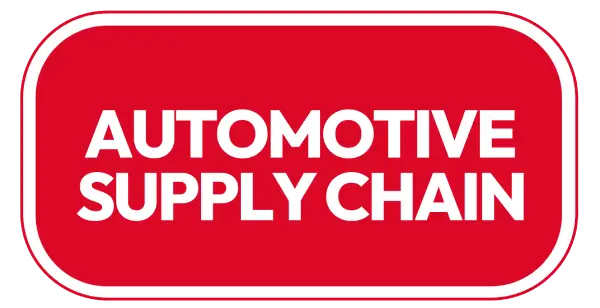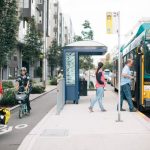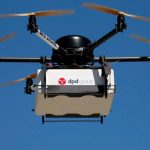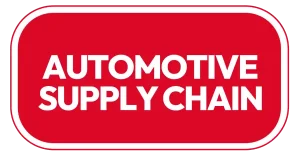The final step of the supply chain, commonly referred to as last-mile delivery, is one of the most critical and challenging stages in logistics. It directly impacts customer satisfaction, cost efficiency, and a company’s overall operational effectiveness. In the era of e-commerce and instant gratification, last-mile delivery has become a focal point for innovation. This blog explores key trends shaping the future of last-mile delivery solutions.
1. The Rise of Same-Day and Instant Delivery
Consumers now expect faster delivery times. Same-day and even instant delivery options are becoming the norm, particularly in urban areas. Retail giants like Amazon and Walmart have set the standard, driving smaller businesses to adapt.
To meet these expectations, companies are leveraging localized distribution centers and advanced logistics software to streamline operations. For example, micro-fulfillment centers located within cities help reduce delivery time and transportation costs by keeping inventory close to customers.
2. Growth of Crowdsourced Delivery Models
Crowdsourced delivery models, like those utilized by Uber Eats and DoorDash, are gaining traction in last-mile logistics. These platforms allow companies to tap into a flexible workforce of independent drivers to fulfill delivery needs.
This model is particularly appealing to businesses that face fluctuating demand or lack the resources to maintain their own fleet. Crowdsourced delivery also empowers small businesses to compete with larger players by offering faster delivery options without significant infrastructure investments.
3. Deployment of Autonomous Delivery Vehicles
Autonomous technology is making waves in last-mile delivery. Companies are experimenting with self-driving delivery vans, drones, and robots to reduce costs and improve efficiency. For instance, companies like Starship Technologies and Nuro are using autonomous robots to deliver goods in specific neighborhoods, offering contactless and eco-friendly delivery solutions.
While regulatory hurdles and high initial investment remain barriers, the potential for scalability and cost reduction makes autonomous vehicles a promising trend for the future.
4. Sustainability Initiatives in Last-Mile Logistics
Environmental concerns are driving a push for greener last-mile delivery solutions. Businesses are adopting electric vehicles (EVs), bicycle couriers, and even cargo e-bikes to reduce carbon emissions.
Additionally, route optimization software is being employed to minimize fuel consumption and improve delivery efficiency. Companies like DHL and FedEx have pledged to integrate sustainable practices, demonstrating that green delivery solutions are not just ethical but also a strategic advantage in today’s market.
5. Use of Advanced Analytics and Artificial Intelligence (AI)
Data-driven decision-making is transforming last-mile logistics. AI-powered tools enable companies to predict delivery times accurately, optimize routes, and allocate resources efficiently. Predictive analytics also helps in managing inventory and anticipating demand spikes.
Moreover, real-time tracking systems powered by IoT (Internet of Things) devices ensure transparency for customers and improve the overall delivery experience. AI and analytics are becoming essential for businesses seeking to enhance their operational efficiency and customer satisfaction.
6. The Shift to Dark Stores
Dark stores—retail locations that are optimized for fulfilling online orders rather than serving walk-in customers—are becoming a significant part of last-mile delivery strategies. These facilities allow businesses to process orders quickly and deliver them within hours.
Grocery retailers like Tesco and Carrefour are increasingly using dark stores to meet the surge in online grocery shopping. The trend highlights the growing importance of dedicated spaces for efficient last-mile operations.
7. Emphasis on Contactless Delivery
The COVID-19 pandemic has accelerated the adoption of contactless delivery methods. From parcel lockers to delivery robots, businesses are implementing innovative solutions to ensure safety and convenience for customers.
Contactless delivery also reduces labor costs and allows companies to cater to high volumes of orders efficiently. As consumer preferences evolve, the demand for these secure and hygienic delivery options is expected to continue growing.
8. Integration of Multi-Modal Delivery Networks
To overcome the challenges of urban congestion and rural accessibility, companies are adopting multi-modal delivery approaches. This involves using a combination of transportation modes, such as trucks, bicycles, drones, and on-foot couriers, to complete the last mile effectively.
For example, FedEx is integrating drones with traditional vehicles to navigate hard-to-reach areas. These hybrid models allow businesses to maintain speed and efficiency across diverse delivery environments.
9. Personalized Delivery Experiences
Personalization is becoming a cornerstone of last-mile delivery. Customers increasingly want to choose their preferred delivery times, locations, and methods. Some companies even offer customizable options, such as eco-friendly packaging or priority delivery for urgent orders.
Businesses are using mobile apps and customer portals to provide these personalized services, enhancing customer satisfaction and loyalty.
10. The Role of Blockchain in Last-Mile Logistics
Blockchain technology is emerging as a solution for improving transparency and security in last-mile delivery. It can streamline operations by providing an immutable record of transactions, ensuring accountability across the supply chain.
For instance, blockchain can help track packages in real time, verify delivery statuses, and prevent fraud. While still in its nascent stage, the integration of blockchain holds immense potential for enhancing the reliability of last-mile delivery systems.
Conclusion
The rapid evolution of last-mile delivery solutions reflects the growing importance of meeting customer expectations in a digital-first world. Trends such as same-day delivery, autonomous vehicles, sustainability, and personalized experiences are reshaping the logistics landscape. Businesses that stay ahead of these trends will not only improve their operational efficiency but also strengthen their competitive edge in the market.
As the demand for faster, more sustainable, and innovative delivery solutions rises, the future of last-mile delivery will likely see even greater advancements in technology and strategy.







